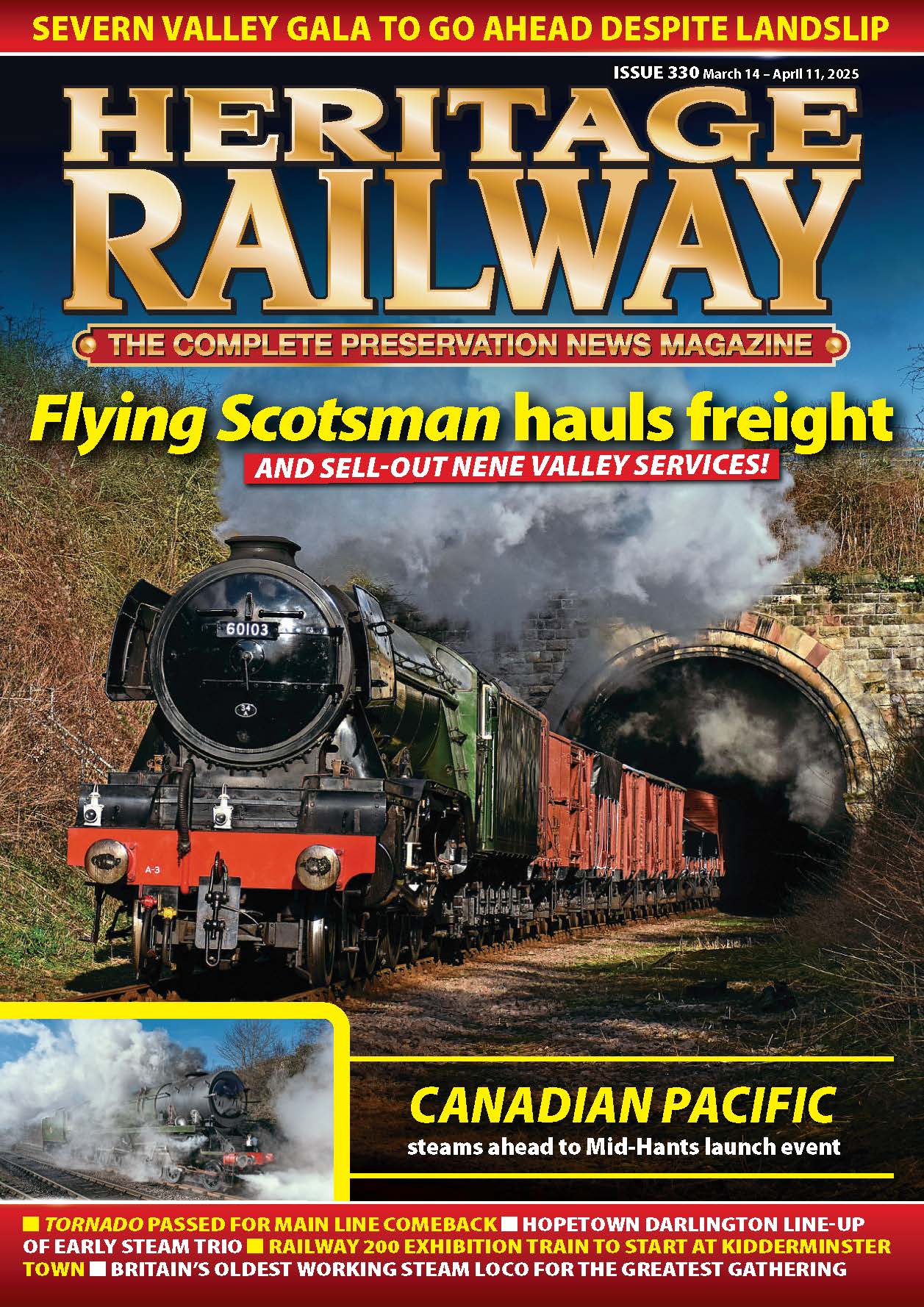The pairing of the sole surviving Somerset & Dorset Joint Railway locomotives, 7F 2-8-0s No. 53808 and 53809, now both liveried in BR black, was the highlight of the West Somerset Railway’s immensely-successful spring gala, which marked the 50th anniversary of the closure of the legendary line across the Mendip Hills. However, it might not be the last time that we see the pair working together in the country, as Robin Jones and Brian Sharpe report.
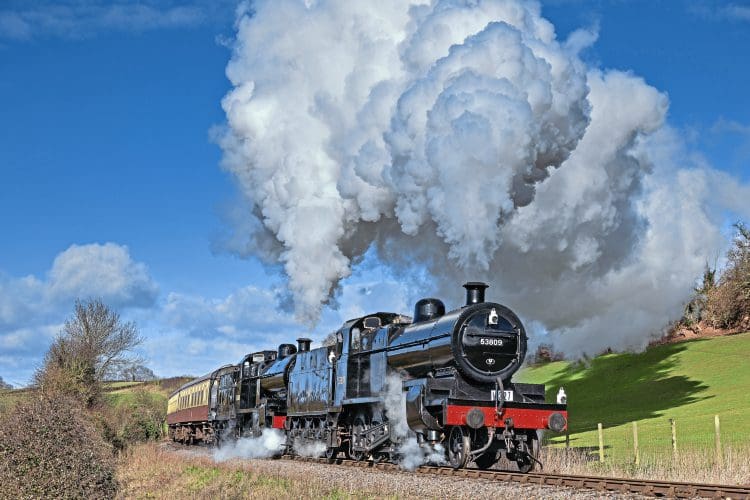
A total of 6627 passengers travelled on the West Somerset Railway during the line’s landmark spring gala to commemorate the 50th anniversary of the closure of the Somerset & Dorset Joint Railway system.
As we closed for press, the railway was holding talks with the owning group of guest S&D 7F 2-8-0 No. 53809 for it to remain at the railway for at least the next few months.
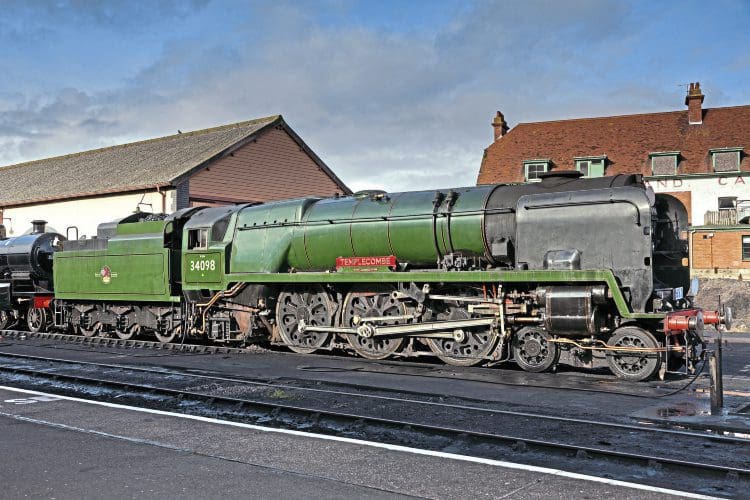
Its contract for the visit expired at the end of March. Long based at the Midland Railway – Butterley, it will continue to run alongside sister No. 53808 as part of the home fleet.
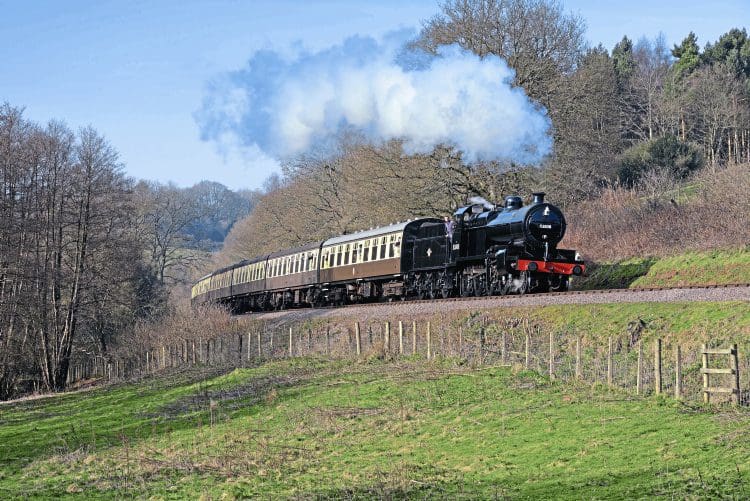
The pair are the only two S&D locomotives to survive, and for the first time since the legendary trans-Mendip line closed on March 6, 1966, the two S&D engines were based in Somerset.
Enjoy more Heritage Railway reading in the four-weekly magazine.
Click here to subscribe & save.
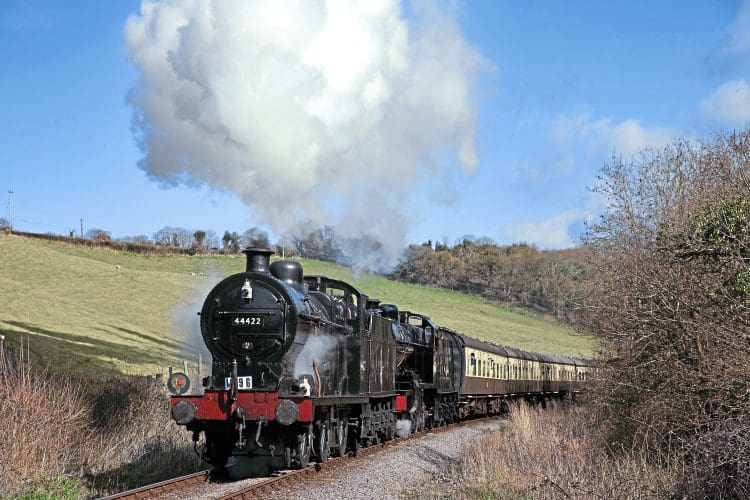
The March 5-6 and 10-13 gala featured eight locomotives of classes associated with the S&D. As well as both 7Fs, the event featured LMS 4F 0-6-0 No. 44422, Stanier 8F 2-8-0 No. 48624 (a late substitution following successive problems with the availability of ‘Black Fives’ Nos. 45379 and 44871), BR Standard 9F 2-10-0 No. 92214, Bulleid Battle of Britain Pacifics Nos. 34053 Sir Keith Park and 34070 Manston and Standard BR Standard 4MT 2-6-4T No. 80072. No. 80072 was renumbered as classmate No. 80043, which worked one of the final trains on the S&D.
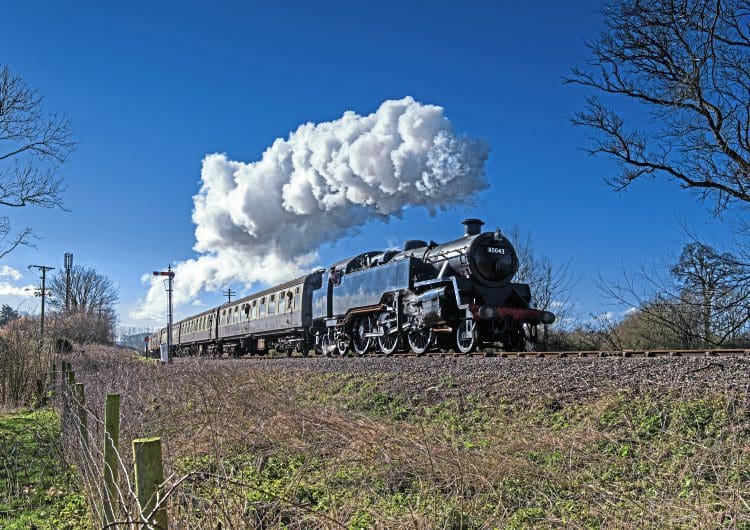
The most popular train of the gala was the doubleheader featuring both 7Fs on Saturday, March 12.
Operationally, the only problem was a visiting engineers train on March 10, which prevented the triangle at Norton Fitzwarren being used for one turning manoeuvre on March 10.
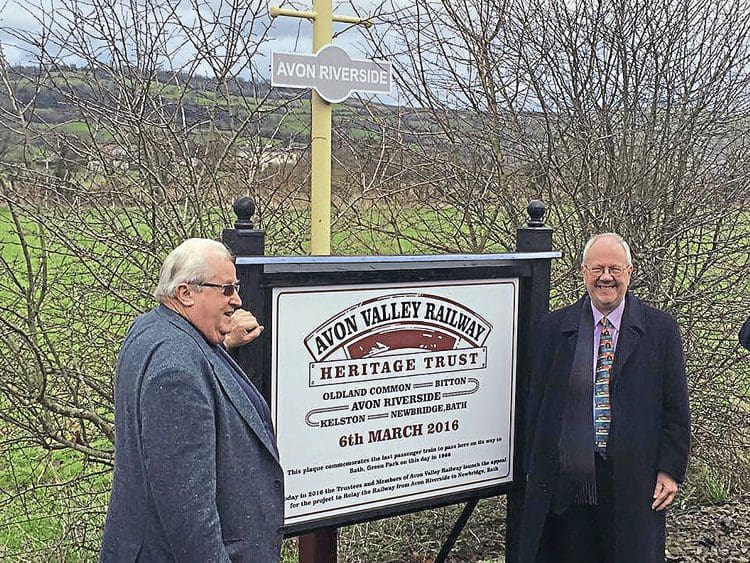
As 7F No. 53809 had worked tender first from Minehead on the affected train as a late substitute for No. 80072, this wasn’t a problem, and apart from this, all locomotives were turned to run chimney first from each end of the line throughout.
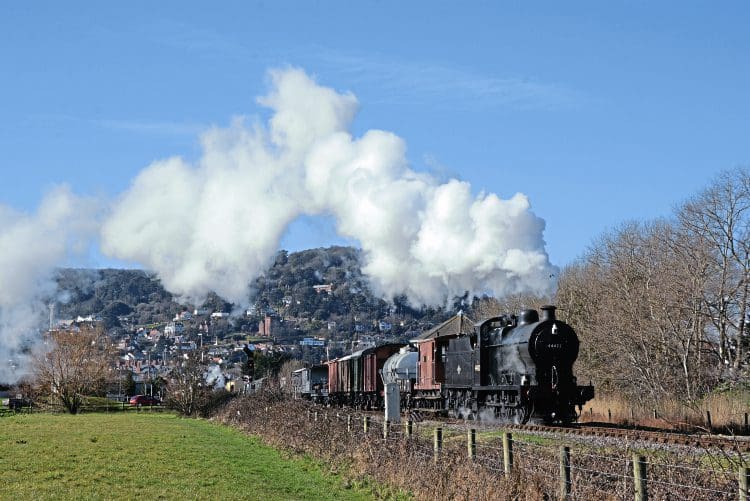
For March 10-13, the Friends of Templecombe Station sponsored a change of identity of No. 34053 to long-scrapped classmate No. 34098 Templecombe. Stations along the line were all renamed as well-known S&D stations for the duration of the event.
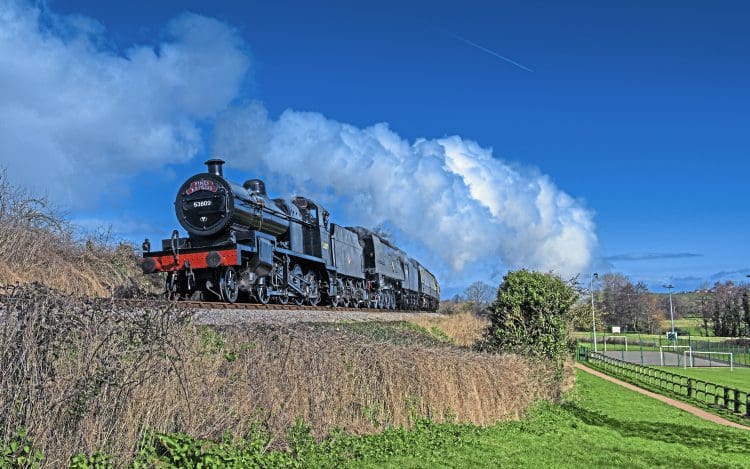
Also in action were Peckett 0-4-0ST Kilmersdon, which worked shuttles in and out of Minehead station and which gave passengers the first chance to travel in S&D first class coach No. 4 for the first time since 1930 after many years of restoration work by the Somerset and Dorset Railway Trust at Washford.
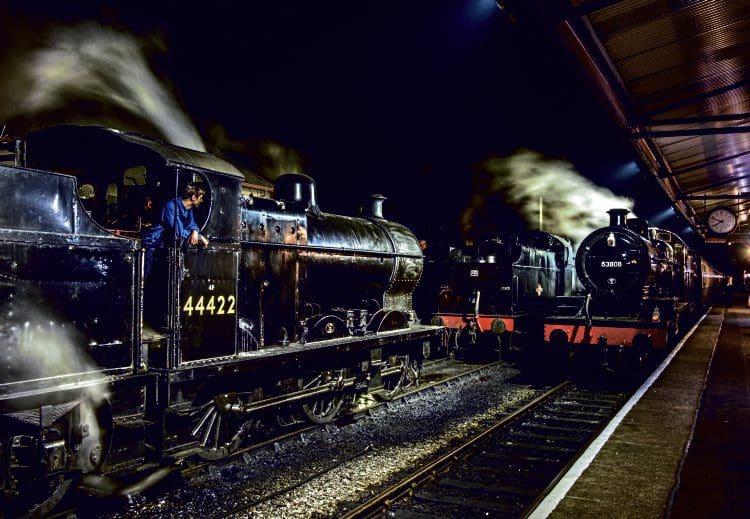
Making its gala debut was another 0-4-0ST, Barclay No. 1219, which has been restored by apprentice Ryan Pope at West Somerset Restorations in Williton, and which shunted at Washford.
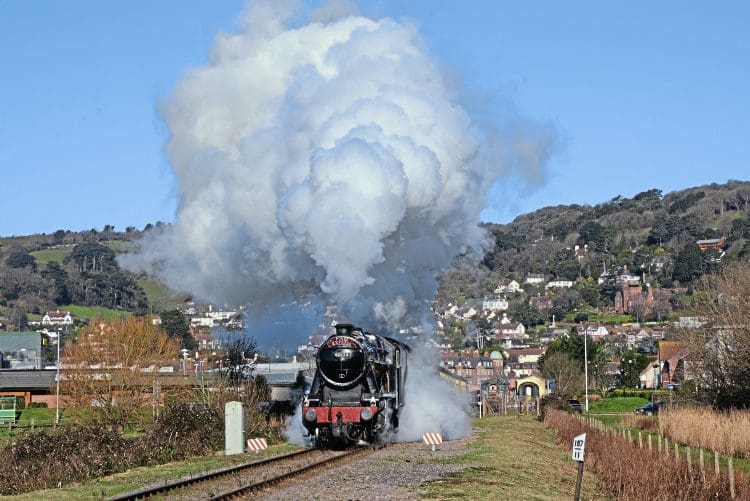
A busy trade was reported at the stations and in the shops and catering outlets along the route of the WSR. Of those who travelled, 5328 journeyed over March 10-13, with March 5 and particularly March 6 being quieter.
WSR general manager Paul Conibeare said: “We knew from advanced bookings that we were going to be busy and that we had attracted visitors from all over Britain and further afield, but it was good to see that we were also welcoming family outings with many of those too young to have known the Somerset and Dorset.
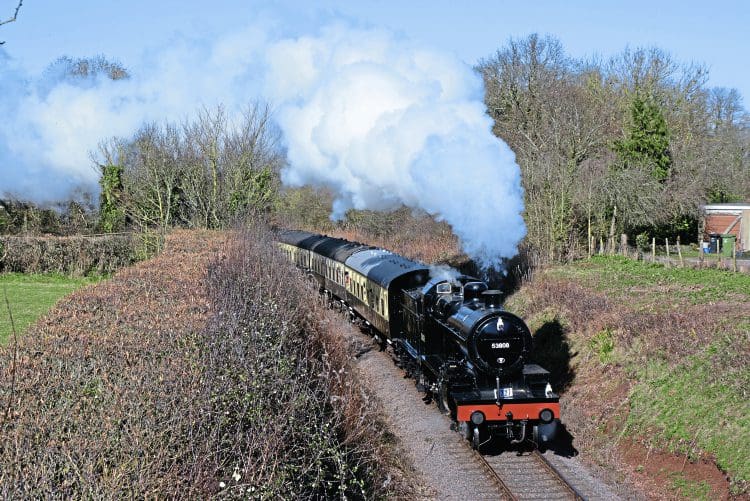
“It is that younger market that we will have to continue to attract to make gala events financially viable into the future.”
Paul celebrated an anniversary of his own – 10 years in charge of the railway – by driving the 8F on March 13 the last day of the gala.
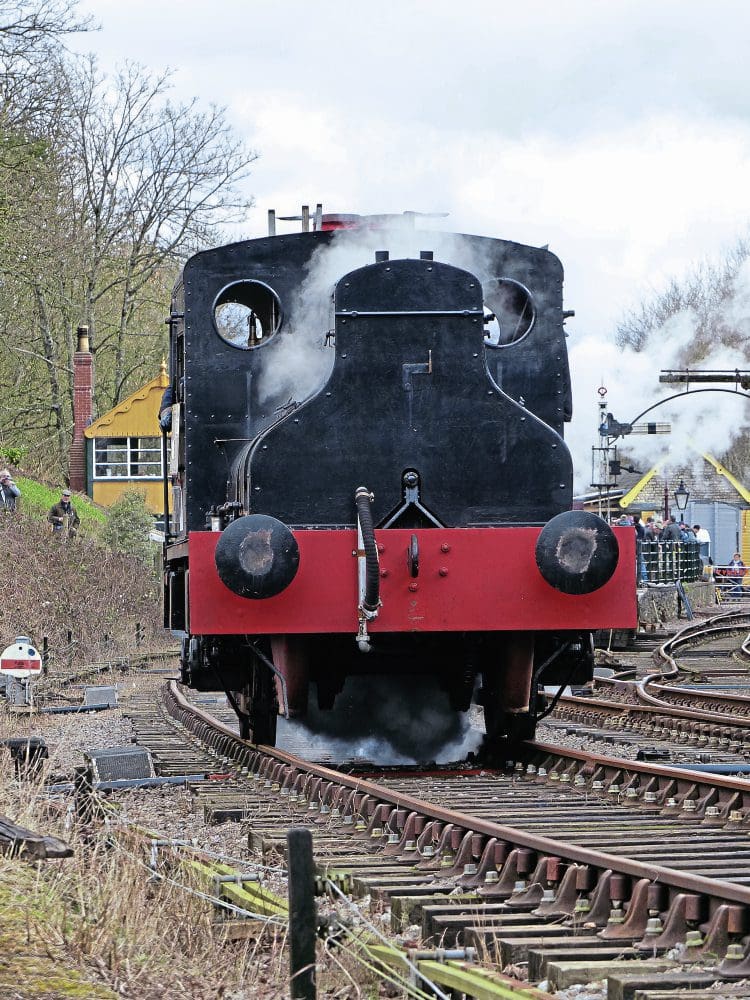
He said: “It’s been a fantastic experience over the last 10 years. It’s been a terrific learning curve too, as those who run a major tourist attraction will know.
“I started during a Somerset & Dorset gala and have celebrated 10 years at a Somerset & Dorset gala.
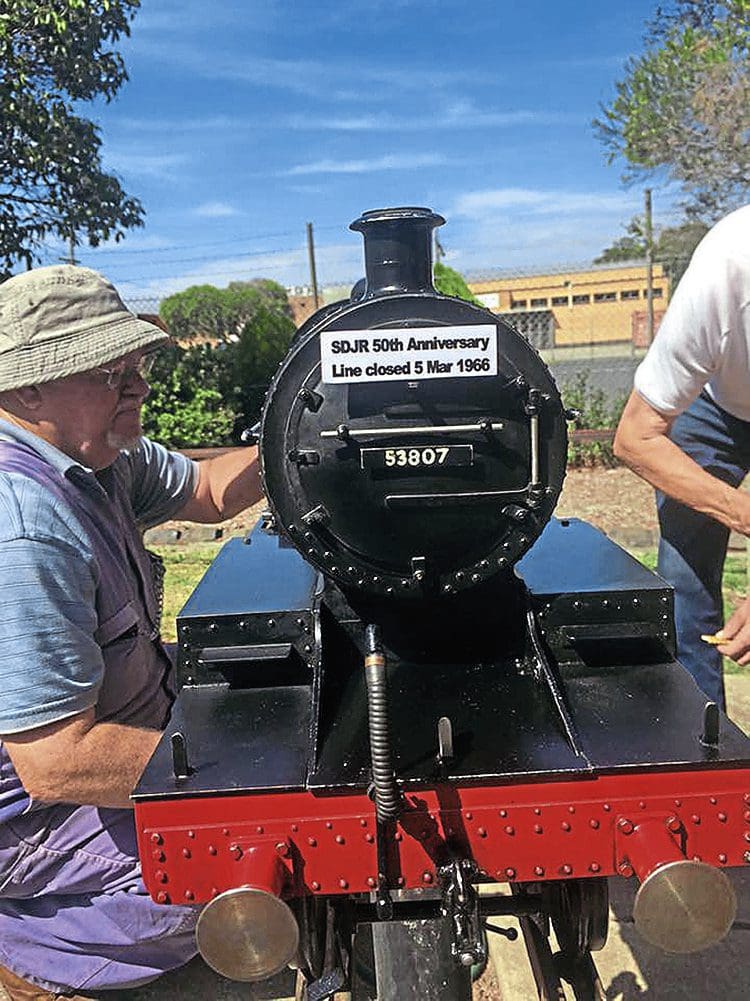
“It is a team effort. I have very good support from our board, and without the support of 1000 volunteers and 50 full-time staff we couldn’t stage this event.”
Paul started on the railway in 1979 as a volunteer involved in restoration, then moved to work on the Bure Valley Railway in Norfolk before returning in 2003 as traction inspector.
He beat off opposition from 120 other applicants for the general manager’s job when it was advertised in 2006.
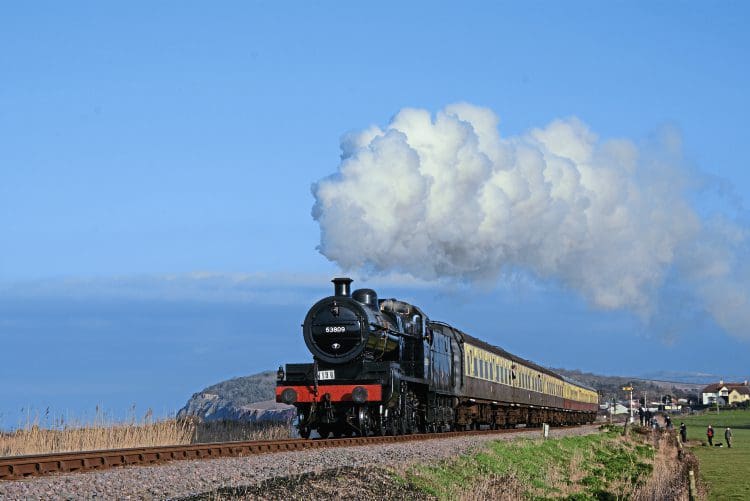
On February 26, a senior member of WSR staff escaped serious injury when he became trapped between Sir Keith Park and its tender while it was being unloaded from at Bishops Lydeard after arriving from the Severn Valley Railway by road.
He was taken to hospital but was found to have suffered only minor injuries and was eventually allowed home.
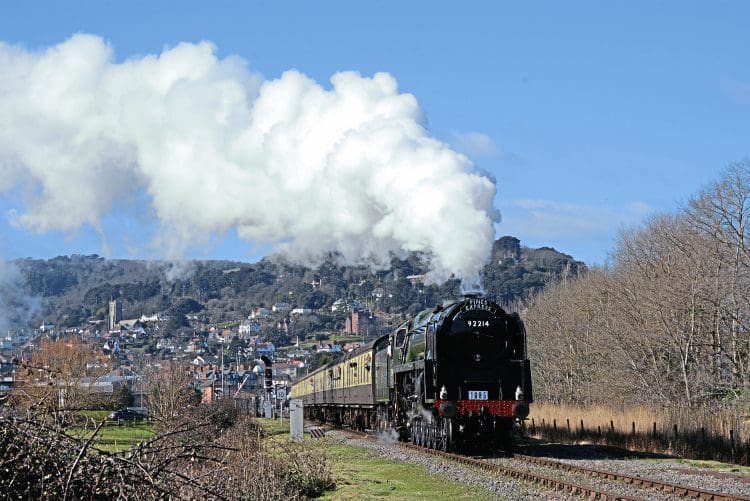
The incident was reported to the Rail Accident Investigation Branch and the Office of Rail and Road, which is now carrying out an investigation.
The unnamed staff member sufficiently recovered to watch the gala action from the platform at Bishops Lydeard.
New book details last few days of Somerset & Dorset system
Swanage Railway volunteer Bob Bunyar has produced a new book detailing the last weeks, days and hours of the Somerset & Dorset main line between Bournemouth, Blandford, Templecombe, Evercreech and Bath to mark the 50th anniversary of the route’s closure.
Bob, 62, has carried out signing sessions of Somerset and Dorset Swansong – The Last Days of a Steam Railway outside the railway shop at Swanage station, at exhibitions at the Museum of Bath at Work and in Evercreech, at restored Midsomer Norton station and at the Gartell Light Railway, part of which runs on the S&D trackbed .
Bob recalled: “My last train ride on the Somerset and Dorset before it closed was on Saturday, March 5, 1966 from Bath to Bournemouth and return on a Great Western Society special hauled by Stanier 8F 2-8-0 No. 48706.
“My memories of this last train trip are of seeing large numbers of people out in fields and on station platforms watching the death-throws of the line with the last trains passing before closure and demolition,” he added.
A pupil at Oldfield boys’ school in Bath, Bob remembers lying in bed as a 13-year-old and listening to the sound of two BR Standard tanks hauling the last timetabled service train into the city’s Bath Green Park station just before 11pm on March 5.
He said: “Hearing the final ‘up’ passenger working arrive back into Bath is a poignant and very sad sound that I will always remember – it was the end of an era. Both locos ran from the Devonshire Tunnel down into the city with their whistles fully open and the sound rebounded around the hills of the city.
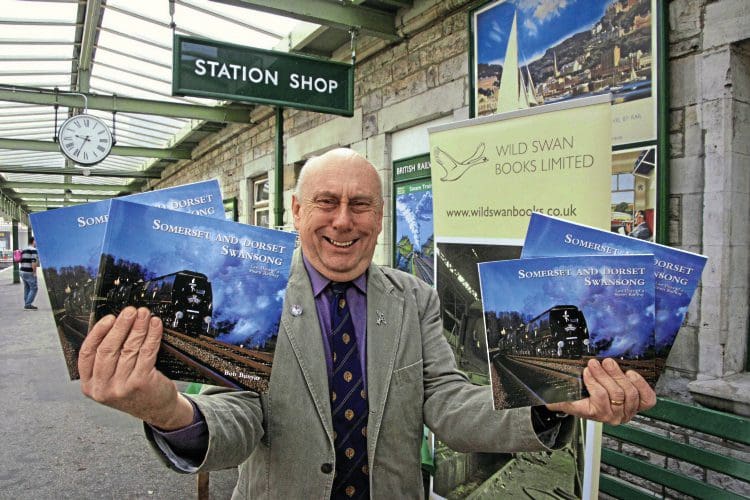
“I lived by the Somerset & Dorset line at Wellow as a small child and have fond memories of sitting on the station platform or playing in nearby fields watching the trains pass, which gave me my love for railways.”
With 67 photographs – many never published before – the new 97-page softback is published by Wild Swan, of Bath. Bob said: “To my knowledge, the final sad hours of the Somerset and Dorset have not been recorded in detail before. I have detailed all train workings and locomotive moves on Sunday, March 6 and Monday, March 7, 1966, which was the closure day.”
The most interesting piece of information that Bob unearthed for his new book was the use of one of the Somerset and Dorset’s old tunnels, Windsor Hill, in the late 1960s for testing a new jet engine to destruction.
Bob explained: “It was the testing of the Olympus engines in the Windsor Hill tunnel after the tracks were lifted. The engines were destined for Concorde – having been tested in the air on Vulcan bombers – and were tested to destruction in the tunnel by running them without lubricating and cooling oil.”
Bob concluded: “I have two very different lasting memories of the Somerset and Dorset. The first is watching the steam trains rumble through Wellow station on long hot summer days. The second is when I had a ride in the brake van of a demolition train from Radstock to Binegar in 1968 hauled by a diesel. Dereliction was everywhere and it was a very sad sight indeed.”
➜ Copies of Somerset and Dorset Swansong – The Last Days of a Steam Railway cost £14.95 and are available from the Swanage station shop or on-line at www.swanagerailway.co.uk
Read more News and Features in Issue 238 of HR – on sale now!
Archive enquiries to: Jane Skayman on 01507 529423 – [email protected]
Advert
 Enjoy more Heritage Railway reading in the four-weekly magazine. Click here to subscribe.
Enjoy more Heritage Railway reading in the four-weekly magazine. Click here to subscribe.

